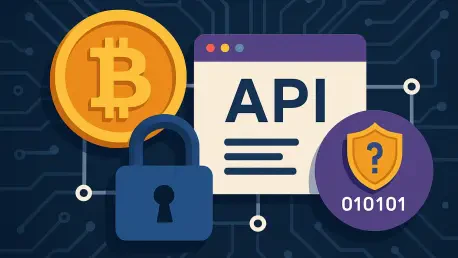In the rapidly evolving landscape of cryptocurrency trading, where millions of automated requests are processed every second by bots and portfolio management tools, the security of API transactions has become a paramount concern for developers and traders alike. Imagine a scenario where a single intercepted trade request could be maliciously replayed, resulting in unauthorized transactions or significant financial loss. This is not a distant threat but a real risk in the high-stakes world of digital assets. A critical yet often under-discussed safeguard against such vulnerabilities is the use of nonces—unique identifiers embedded in each API call. These small but powerful components play an essential role in ensuring that every interaction with a crypto exchange or service remains secure and authentic, preventing duplication and malicious interference in an environment where speed and precision are everything.
Understanding the Role of Nonces in Crypto Security
Defining the Protective Mechanism
At the heart of securing cryptocurrency API transactions lies the concept of a nonce, short for “number used once,” which serves as a unique marker for each request sent to an exchange or service. This identifier ensures that every action, whether it’s placing a trade or initiating a withdrawal, is distinct and cannot be replicated without authorization. By embedding a nonce in each API call, systems can verify the originality of the request, effectively blocking any attempts to reuse or resend it. This mechanism is particularly vital in defending against replay attacks, where attackers intercept legitimate requests and attempt to execute them again for malicious purposes. Without nonces, the integrity of financial operations in the crypto space would be severely compromised, as automated systems handling thousands of transactions per minute could easily fall prey to such exploits, leading to unauthorized access or duplicated actions that drain accounts or manipulate market positions.
Enhancing Multi-Layered Defenses
Beyond their role in thwarting replay attacks, nonces contribute to a broader security framework by working in tandem with other protective measures like API keys and digital signatures. This multi-layered approach is indispensable in an ecosystem where programmatic access to sensitive financial data is commonplace. Nonces also ensure idempotency, a property that prevents the accidental or intentional repetition of critical operations, such as executing the same trade multiple times due to network glitches or deliberate interference. When paired with secure communication protocols like HTTPS, nonces help create a robust barrier against unauthorized access. Their integration into crypto APIs reflects a commitment to safeguarding user assets in an industry where trust is often hard-won. As trading platforms continue to handle increasing volumes of automated requests, the presence of nonces in security architecture remains a fundamental requirement for maintaining operational integrity and user confidence.
Implementation and Challenges of Nonces in Crypto APIs
Diverse Approaches to Nonce Design
The implementation of nonces across cryptocurrency platforms varies widely, reflecting the diverse needs and technical strategies of different exchanges and services. Common formats include monotonically increasing numbers like timestamps measured in milliseconds or sequential counters that increment with each request. Other systems opt for unique strings such as UUIDs or cryptographic hash values to ensure unpredictability. Some platforms enhance security further by combining nonces with timestamps, making them even harder to guess or reuse. For example, trading bots often update nonces dynamically after each successful interaction with a private API, ensuring that only fresh and intentional actions are processed. This diversity in design underscores a shared understanding within the industry: while nonces are essential for security, their effectiveness depends heavily on thoughtful implementation. Developers must tailor nonce strategies to the specific requirements of their systems, balancing complexity with operational efficiency to protect against vulnerabilities.
Navigating Risks and Best Practices
Despite their critical role, nonces are not without challenges, and improper management can expose systems to significant risks. Issues such as nonce reuse, out-of-sync counters between client and server, or predictable values can undermine their protective capabilities, leaving APIs vulnerable to exploitation. To mitigate these threats, developers must prioritize uniqueness in nonce generation and ensure secure storage to prevent interception. Synchronization across distributed applications is equally important to avoid discrepancies that could lead to rejected requests or security gaps. Adopting best practices, such as pairing nonces with digital signatures and using encrypted communication channels, can significantly enhance their effectiveness. As the crypto industry increasingly relies on AI-driven tools and high-frequency trading systems, robust nonce management becomes as crucial as optimizing algorithms. Addressing these challenges head-on ensures that nonces remain a reliable safeguard, protecting transactions from both accidental errors and deliberate attacks.
Future-Proofing Automated Systems
Looking ahead, the growing reliance on automation in cryptocurrency trading, particularly through AI-driven tools and multi-exchange portfolio managers, underscores the ongoing importance of nonces in maintaining system integrity. These advanced systems, which often execute thousands of requests per second, are prime targets for replay attacks and other vulnerabilities if not properly secured. Nonces play a pivotal role in preventing disruptions by ensuring that each operation is unique and verifiable, even under intense workloads. For developers building custom trading agents or analytics platforms, integrating a well-designed nonce strategy is non-negotiable. This involves not only selecting the right format but also anticipating potential scaling issues as transaction volumes grow over the coming years. By staying ahead of emerging threats and refining nonce implementation, the industry can continue to support innovation in automation while upholding the highest standards of security and reliability.









